Online survey fatigue is everywhere. You’ve probably felt it yourself: clicking a survey link with good intentions, only to give up halfway because the questions were irrelevant, repetitive, or simply too long.
The truth is, most surveys fail. But when designed with care, they can do the opposite: they don’t just get completed, they uncover insights your competitors miss.
With clear goals, smart questions, and the right tool, surveys stop being background noise and become a source of insights that drive real growth.
In this guide, you’ll learn:
- What is an online survey?
- How to make an online survey
- Why is it important to collect insights with online survey?
- Advantages vs disadvantages of online surveys
- Online Survey questions examples
- Step by step on how to make an online survey
- Ready to start gahtering insights
What is an online survey?
An online survey is a digital questionnaire designed to collect feedback or opinions from a specific audience. Unlike traditional paper surveys or phone calls, online surveys are fast to distribute, scalable and accessible on any device.
What makes them so powerful is that they don’t just capture numbers, they reveal the why behind behaviours. For example:
- Analytics tell you that users abandoned their cart.
- A survey tells you why they didn’t complete the purchase (e.g. high shipping costs, missing payment methods).
That additional context transforms raw data into actionable insights that drive smarter decisions. If you want to see how this works in practice, take a look at Website Feedback Survey: The Key to a Better UX.
How to make an online survey
Now that we know what makes online surveys powerful, let’s look at how to design one that people actually complete.
Think of it as a three-part formula: goals, questions, and tools!
1. Set clear goals
Don’t jump straight into writing questions. Start with the outcome. Ask yourself:
- What decision will this survey help me make?
- Which area of the business will it impact (CX, product, marketing)?
If your goal can’t fit in one sentence, it’s too broad. Defining a single, clear purpose makes the entire survey more focused and valuable.
2. Write smart questions
The quality of your questions determines the quality of your insights. To keep responses useful:
- Keep questions short and precise.
- Avoid leading or biased wording (“How amazing was your experience?”).
- Use a mix of closed (ratings, multiple choice) and open questions for context.
- Limit to 5–10 questions. Completion rates drop sharply after that.
According to the Baymard Institute, long forms are one of the top reasons users abandon tasks online. The same applies to surveys, keeping them short keeps people engaged and improves data quality.
For more inspiration on what to ask, check out our guide to survey questions
3. Choose the right tool
There are plenty of survey software available, each serving different needs. Simpler solutions, such as Google Forms or Typeform, can be a good fit for straightforward surveys or small-scale projects.
If you’d like to explore more tools, take a look at our overview of the best online survey software
However, businesses often require more advanced capabilities to ensure feedback translates into actionable insights. This is where a professional feedback platform like Mopinion comes in. With features such as:
- Advanced targeting (by device, behaviour or location)
- Real-time dashboards and exports
- Smart Recaps that automatically highlight the most important insights
This means you spend less time cleaning data and more time acting on it. For inspiration on what to ask, check out our blog on different types of website feedback.
Why is it important to collect insights with online surveys?
A well-designed online survey strikes the perfect balance between scale (reaching many people quickly) and depth (understanding the personal “why” behind actions). That’s something traditional analytics alone can’t deliver.
Businesses use surveys to:
- Improve customer experience by identifying pain points in real time.
- Boost response rates with shorter, smarter designs.
- Collect insights that guide decisions on what to fix or improve.
This is why the online survey software market is booming, valued at $3.61 billion in 2023 and projected to nearly double by 2030 (Grand View Research). In short, surveys give you speed, scale, and context, all in one.
Advantages vs disadvantages of online surveys
Like any method, online surveys come with strengths and weaknesses. The key is knowing how to maximise the former while avoiding the latter. When designed carefully and paired with the right platform, however, the advantages far outweigh the downsides
Advantages:
- Cost-effective and scalable.
- Quick distribution across multiple channels.
- Mobile-friendly and easy to complete.
- Results available in real time.
Disadvantages:
- Risk of fatigue if surveys are too long.
- Poor design can bias results.
- Without targeting, you risk irrelevant responses.
Online Survey questions examples
Asking the right questions is the difference between a survey that delivers real insights and one that gets ignored. Below are a few effective examples you can adapt, depending on your goals:
Customer experience (CX)
- “How satisfied are you with your experience today?” (Rating scale 1–5)
- “What’s the main reason you gave this score?” (Open text)
This combination captures both measurable satisfaction levels and the reasoning behind them.
Website and usability
- “Did you find what you were looking for?” (Yes/No)
- “What stopped you from completing your task today?” (Multiple choice: confusing navigation, missing information, technical error, other)
Together, these questions reveal friction points users encounter while navigating your site.
Product and feature feedback
- “How easy was it to use (specific feature)?” (Likert scale: Very easy → Very difficult)
- “What would improve your experience with this feature?” (Open text).
These responses help product teams understand usability and prioritise improvements.
Post-purchase or service
- “How likely are you to recommend us to a friend or colleague?” (NPS scale 0–10)
- “What could we do to make your experience even better?” (Open text)
This pair tracks overall loyalty while also highlighting actionable ways to enhance customer experience.
Employee feedback (internal surveys)
- “Do you feel you have the tools and resources needed to do your job effectively?” (Yes/No with optional comment)
- “What could we improve in our workplace environment?” (Open text)
These questions encourage constructive input from employees while keeping the survey concise.
Step by step on how to make an online survey
There are many different tools you can use to make an online survey. As a digital feedback provider, we’ll show you how to create one directly in Mopinion!
1. Create your survey
Let’s begin by creating your survey.
After logging into your Mopinion (trial) account, navigate to the left-hand sidebar. Under ‘Data Collection’, click on ‘Feedback Forms’.
Then click ‘Create new form’. You’ll be asked whether you’d like to use a Standard Form or a Conversational Form. For online surveys, both work great, it just depends on your goal.
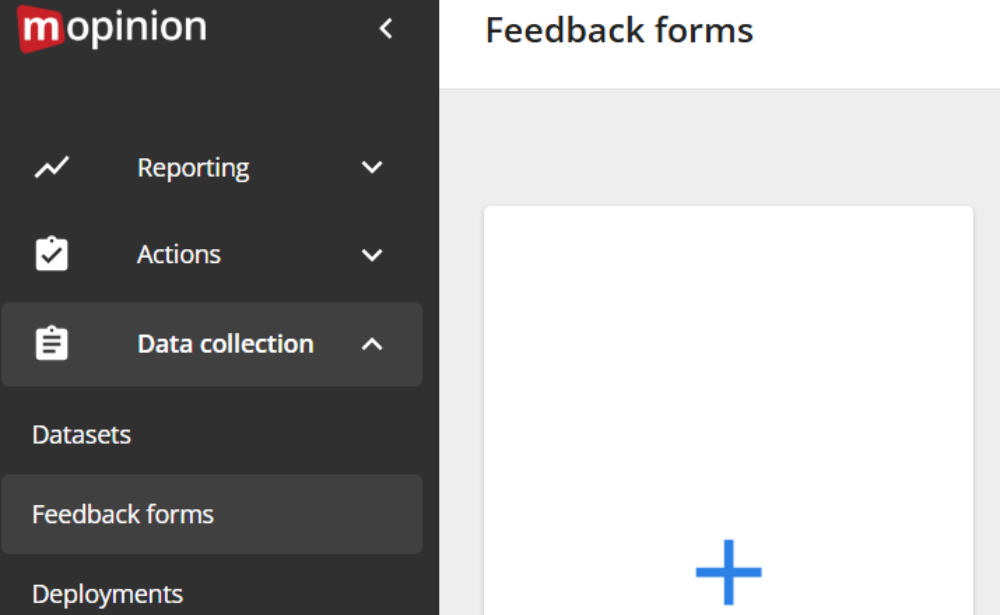
Next, choose ‘Website’ as your feedback channel. You can either build your survey from scratch or use one of Mopinion’s ready-made templates.
And remember: Templates are perfect if you want to save time and start with pre-filled questions!
2. Add your questions
Now it’s the crucial time to decide what you want to ask.
In the Build step, click ‘Add’ to choose from a range of question types, such as:
- Rating (e.g. NPS, CSAT, CES)
- Multiple choice
- Open comments
- Categories
Combine different question types to gather both quantitative and qualitative insights.
For example, use a rating to measure satisfaction and follow it with an open-text question to understand why someone gave that score.
Keep your survey short, ideally 5 to 10 questions max, to boost completion rates!
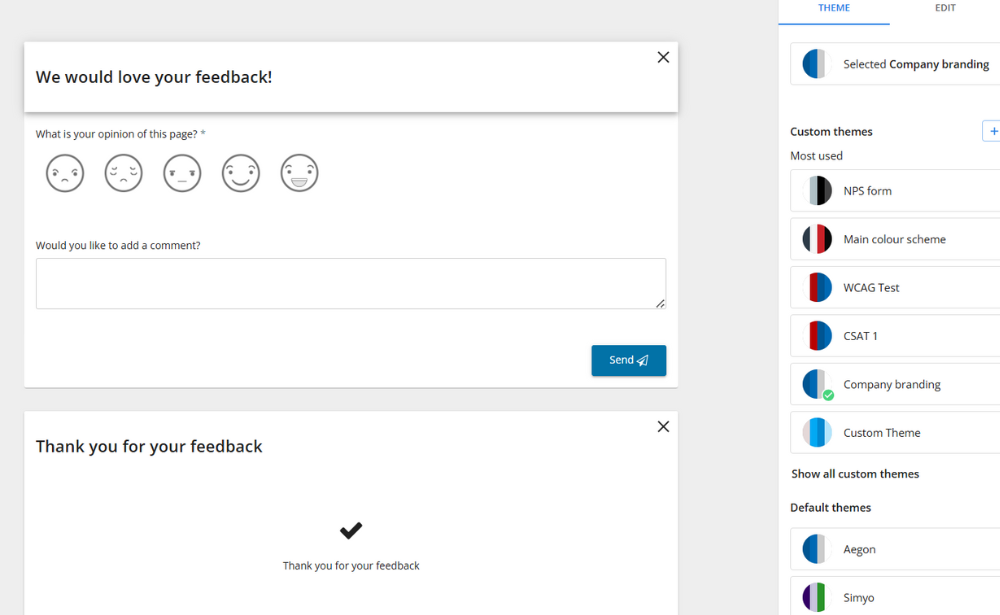
3. Customise your design
Once your questions are ready, make your survey look great.
Go to the ‘Design’ tab where you can add your logo, adjust colours, and match fonts to your brand.
Want to save time for future surveys? Try the Themes feature to create and reuse your own branded templates.
Customising is super straightforward, just click the element you want to change and start editing!
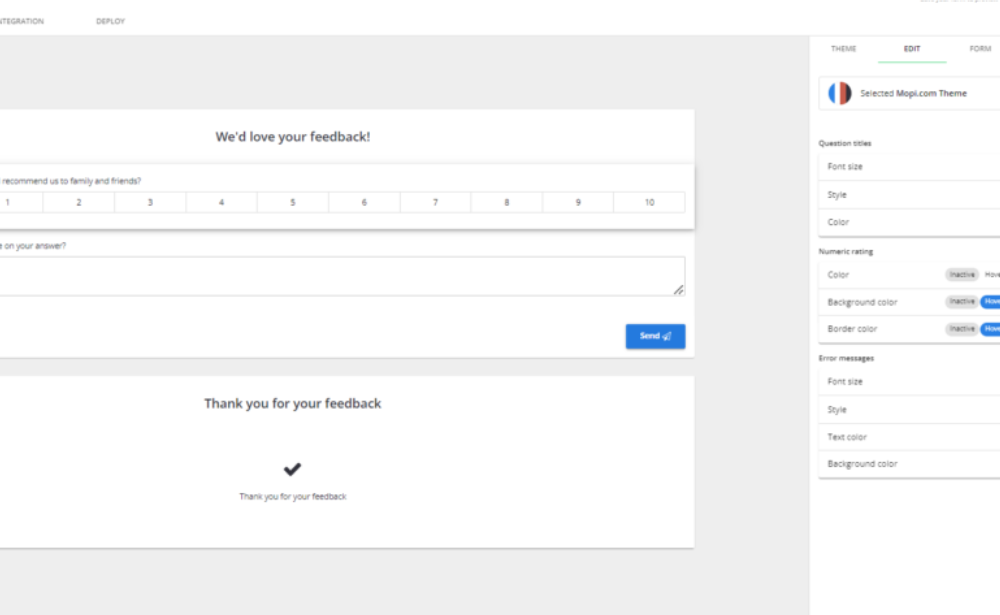
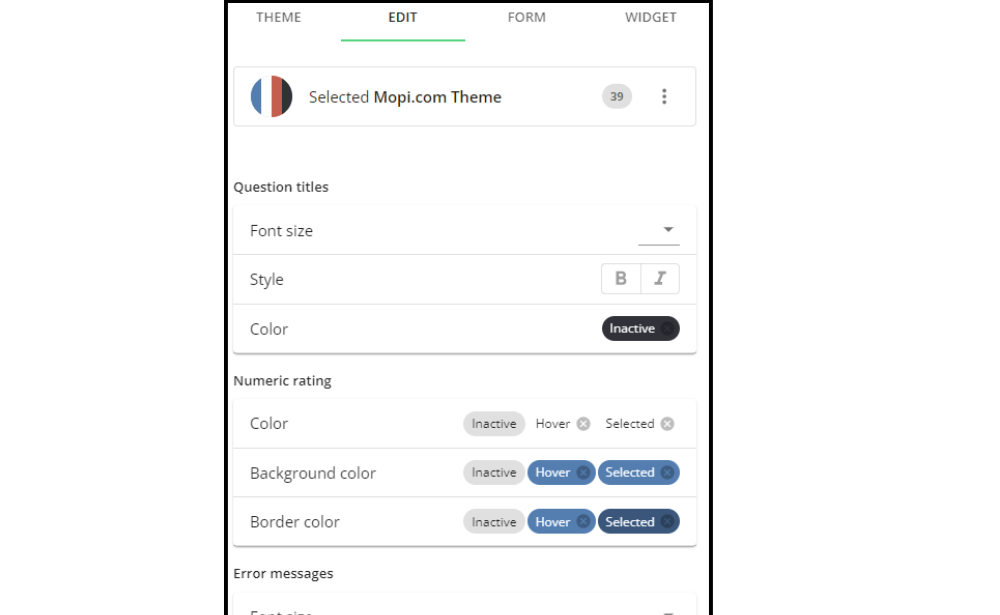
4. Preview and test your survey
Before you go live, always test!
Click ‘Preview’ (blue button at the top right) to see how your survey looks and behaves.
Check that all questions display correctly, logic flows as intended, and the design looks good on both desktop and mobile.
A good tip: Ask a colleague to test it too, a fresh pair of eyes often spots what you might miss.
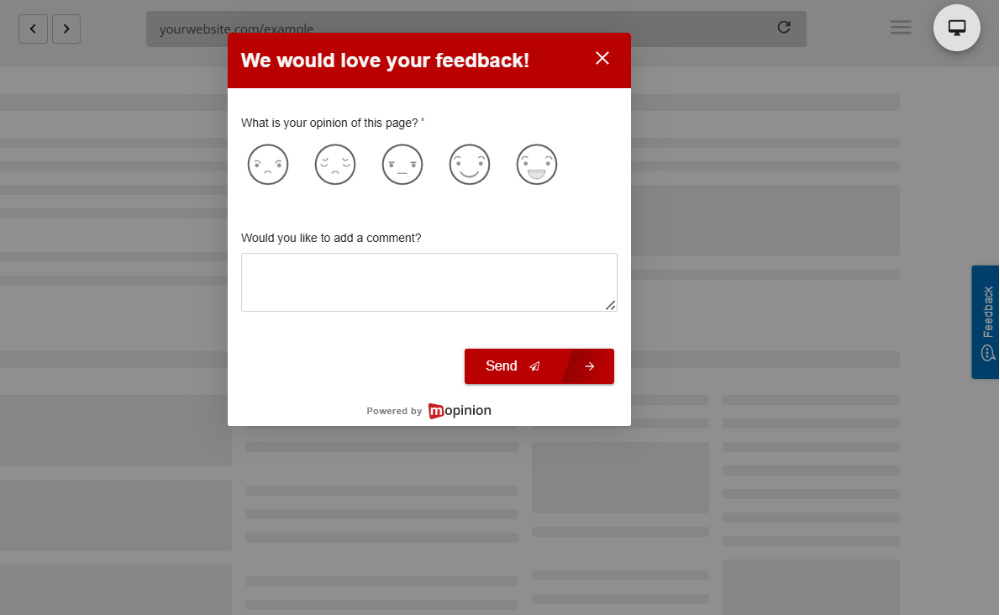
5. Create your deployment
Now that your survey looks the part, it’s time to decide where and how it will appear.
Without creating a deployment, there’s no place to set your triggers and conditions.
In your Mopinion account, open your survey and click on the ‘Deployment’ tab at the top of the form builder.
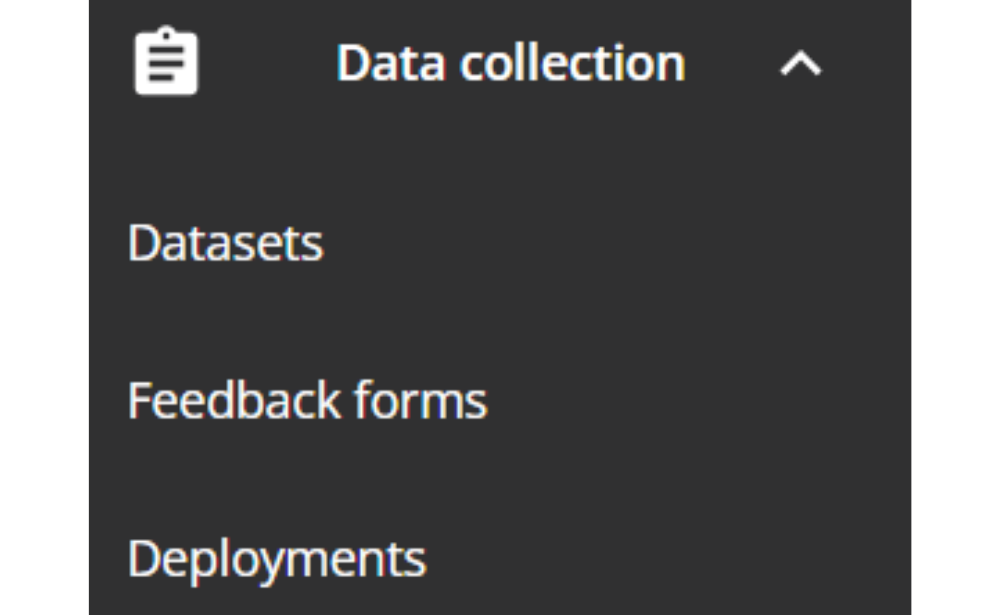
Here’s where you manage everything related to displaying your survey.
Choose your deployment type:
- Website – show your survey as a widget or pop-up
- App – collect in-app feedback
- Email – include a feedback form in your email campaigns
For this example, choose Website.
6. Set up targeting and triggers
Once your deployment is created, it’s time to decide who will see your survey and when.
Under the Deployment settings, you can:
- Add the page URL or domain where the survey will be active
- Choose its display position (bottom-right widget, modal pop-up, or full-page form)
- Set frequency limits to control how often a visitor sees it
Scroll down to Targeting rules to define the exact triggers. For example:
- Show after a visitor spends 30 seconds on a page
- Trigger when a user abandons the checkout
- Display only on a specific page (e.g. thank-you or support)
- Activate on exit intent or after 50% scroll depth
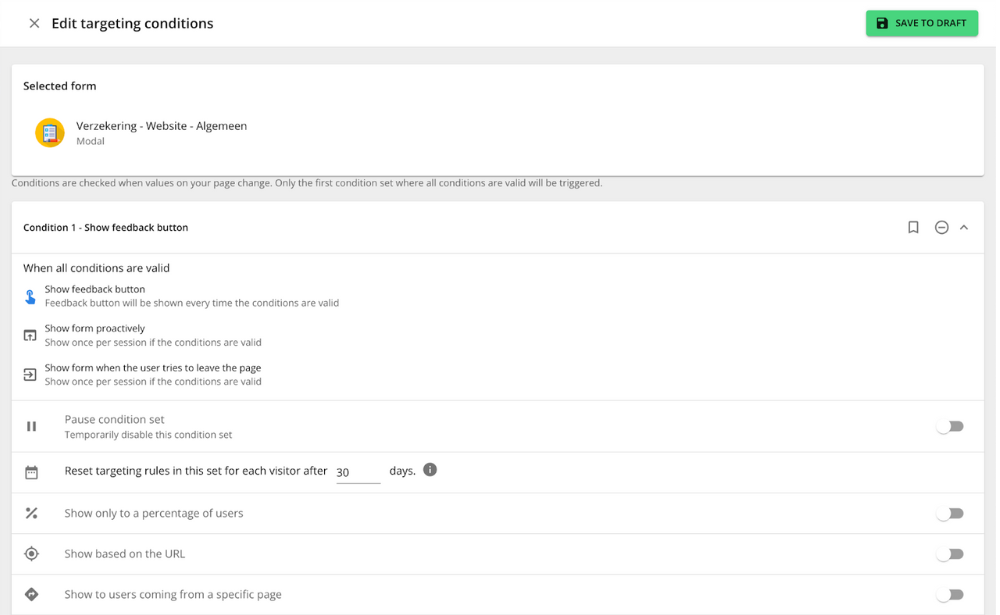
Smart targeting ensures your survey appears at the right time and reaches the right audience, leading to more relevant insights.
7. Publish your survey
Happy with everything? Time to go live!
Go to the ‘Deploy’ step and click ‘Publish’. Your survey will instantly be active on your chosen pages or app environment.
If you’re using a trial account, you can do more than just simulate user behaviour, you can actually deploy your survey on your own website and start collecting real feedback. This gives you the full Mopinion experience and a clear view of how the data appears in your dashboard.
8. Start collecting and analysing feedback
Once live, your survey will start gathering valuable insights. You can monitor results in real time via Mopinion’s dashboards and Smart Recaps to spot trends, track satisfaction, and share findings across your team.
The real magic begins here, turning your online survey data into decisions that improve your digital experience!
Ready to start gahtering insights
An online survey isn’t just another form to fill out, it’s a direct conversation with your audience. By setting a clear goal, asking the right questions, and using the right tool, you create surveys that people not only complete but also provide insights you can act on.
Every abandoned survey is a missed chance to listen. With Mopinion, you turn those chances into insights and those insights into real growth.
Ready to see how much value a well-designed survey can bring? Start with Mopinion today.
Ready to see Mopinion in action?
Want to learn more about Mopinion’s all-in-1 user feedback platform? Don’t be shy and take our software for a spin! Do you prefer it a bit more personal? Just book a demo. One of our feedback pro’s will guide you through the software and answer any questions you may have.







